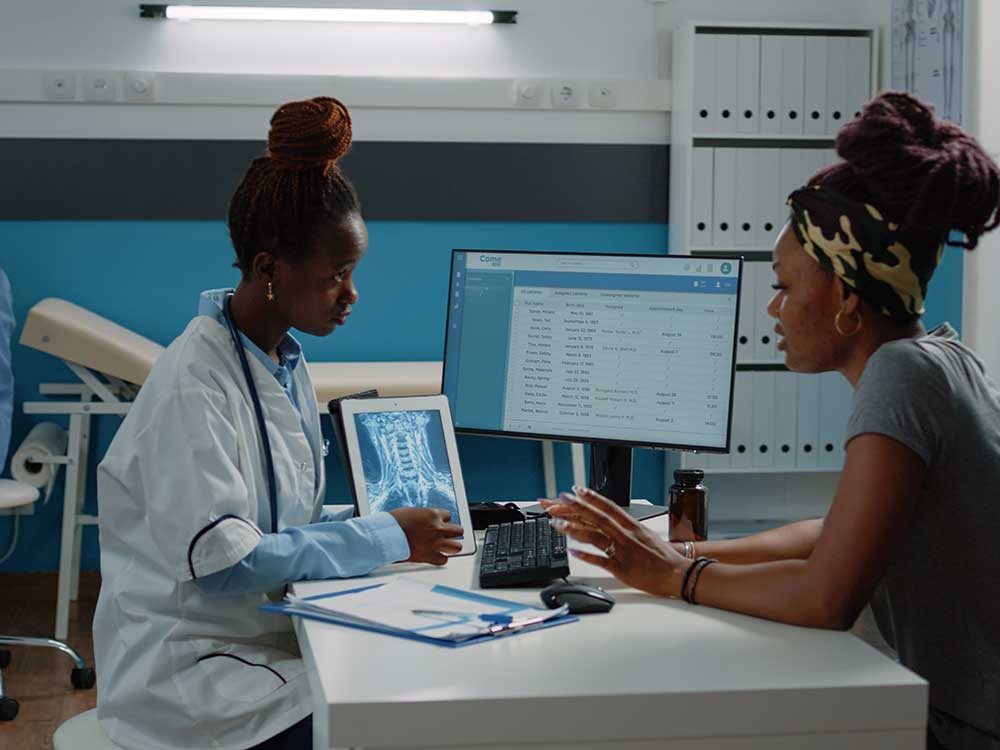Best Practices in Medical Administration for Improving Performance and Lowering Expenses
In the ever-evolving landscape of healthcare, the search of finest methods in clinical management is vital for boosting performance and suppressing expenditures. By integrating advanced technologies such as electronic health records and telemedicine, medical care companies can enhance procedures and improve patient care.
Leveraging Advanced Innovation
In today's swiftly evolving healthcare landscape, leveraging sophisticated innovation is no much longer optional however essential for efficient clinical management. The integration of electronic options right into medical care systems has actually changed the means centers run, simplifying procedures and boosting person treatment. Electronic Wellness Records (EHRs) are crucial, giving thorough patient information that can be accessed instantly by authorized personnel, hence lowering redundancy and decreasing mistakes. By systematizing individual info, EHRs get rid of the need for cumbersome paperwork and facilitate smooth communication amongst health care carriers.
Telemedicine is one more technical development that has actually reinvented patient communication. It uses ease for both patients and medical care specialists by allowing remote consultations, which can lower the demand for in-person visits and maximize visit scheduling. In addition, telehealth systems can prolong healthcare accessibility to country or underserved locations, bridging gaps in care shipment.
Additionally, making use of Artificial Knowledge (AI) and artificial intelligence is coming to be progressively prevalent in anticipating analytics, permitting early discovery of possible health and wellness problems and even more informed decision-making. These technologies, when integrated properly, can improve analysis accuracy and individualize individual therapy strategies, eventually causing enhanced medical care results and operational performance.
Optimizing Source Allocation
Efficient resource allowance is vital for making the most of the effectiveness of medical management. By tactically managing resources such as workers, equipment, and finances, medical care facilities can significantly enhance their functional performance, enhance individual end results, and lower unneeded expenses. The initial step in maximizing source appropriation entails performing a thorough analysis of existing properties and determining areas where resources may be underutilized or overextended. This assessment should be data-driven, utilizing metrics and analytics to inform decision-making procedures.
Focusing on source allocation based upon individual demands and solution demands is necessary. This involves straightening resources with high-demand areas, such as emergency care or specialized treatments, to ensure timely and effective person treatment. Applying flexible staffing models can also maximize labor sources by adjusting personnel allotment in action to fluctuating patient quantities. Furthermore, embracing telemedicine and various other technical options can alleviate physical source restraints by providing alternate methods for patient-provider interactions.
Funds must be meticulously checked and designated with strategic insight to sustain both temporary operational requirements and lasting institutional objectives. This includes investing in training programs that improve personnel competencies and adopting energy-efficient methods that lower operational costs (medical administration). Eventually, a maximized resource appropriation strategy promotes a sustainable healthcare atmosphere that is receptive, effective, and monetarily sensible
Streamlining Workflow Processes
When health care centers purpose to enhance functional effectiveness, improving operations processes ends up being a critical emphasis. Effective operations minimize redundancy, eliminate unneeded actions, and boost sychronisation amongst health care specialists. This technique not only speeds up service shipment yet also improves the top quality of patient care.

Next, innovation integration plays a substantial role in enhancing workflows. Implementing electronic health and wellness records (EHRs) and digital physician order entrance (CPOE) systems decreases paperwork, lessens human mistake, and makes sure info comes to all relevant workers. Additionally, leveraging telemedicine systems can improve patient examinations and follow-ups, decreasing the pressure on physical infrastructure.

Inevitably, structured process cause cost reductions and improved patient fulfillment, promoting a more sustainable healthcare setting.
Enhancing Information Administration
Building upon streamlined workflows, maximizing information administration becomes an important component beforehand healthcare management. Effective data management systems are crucial for maintaining exact patient records, boosting decision-making, and making certain conformity with regulative standards. By applying durable data management remedies, health care facilities can enhance the top quality of person treatment while simultaneously decreasing operational prices.
One secret facet of improving data management is the combination of sophisticated electronic health and wellness document (EHR) systems. These systems assist in the seamless exchange of patient info across various divisions, lowering replication of examinations and reducing errors. A properly designed EHR system supports data analytics, making it possible for medical care providers to determine trends and make educated choices relating to person care.
Furthermore, securing person information is extremely important. Adopting comprehensive cybersecurity actions, including security and routine audits, makes certain the honesty and confidentiality of delicate information. This not only shields individuals however also preserves the institution's online reputation.
Investing in staff training is another crucial variable. Enlightening health care specialists on data management techniques enhances their ability to successfully make use of modern technology, resulting in boosted client results. To conclude, enhancing information management with advanced innovation and check here comprehensive training is essential for achieving performance and expense decrease in clinical management.
Fostering Collaborative Communication
A critical element in progressing clinical management is cultivating joint interaction among medical care specialists. Reliable communication is critical for making sure smooth individual treatment, maximizing therapy end results, and decreasing mistakes. By urging open dialogue and sychronisation across multidisciplinary teams, healthcare companies can improve their operational efficiency and lower unneeded expenses.
Central to this approach is the assimilation of interaction innovations such as electronic wellness records (EHRs) and secure messaging systems, which assist in the rapid exchange of essential patient details. These tools make it possible for doctor to gain official statement access to and share information in actual time, guaranteeing that all group participants are informed and aligned in their decision-making procedures. Additionally, regular group meetings and interdisciplinary rounds can further advertise a society of partnership and responsibility.
Educating programs concentrated on enhancing communication abilities are likewise necessary. These programs can assist staff create the capacity to share details plainly and listen actively, therefore lowering misconceptions and cultivating an More Info encouraging job atmosphere. On top of that, embracing standard interaction protocols, such as SBAR (Scenario, Background, Assessment, Referral), can enhance the exchange of information, making certain that vital information are communicated succinctly and efficiently. Eventually, cultivating joint interaction brings about improved healthcare distribution and expense savings (medical administration).

Conclusion
Integrating advanced innovation, such as digital health documents and telemedicine, alongside enhanced source allocation and streamlined operations processes, is important for improving performance in clinical administration. Reliable information administration and cultivating collective communication amongst healthcare teams are important for minimizing redundancies and improving treatment top quality. By prioritizing preventative care and engaging in quality enhancement campaigns, health care companies can accomplish significant cost savings and boosted client outcomes, thereby making certain sustainable healthcare distribution in a progressively intricate environment.